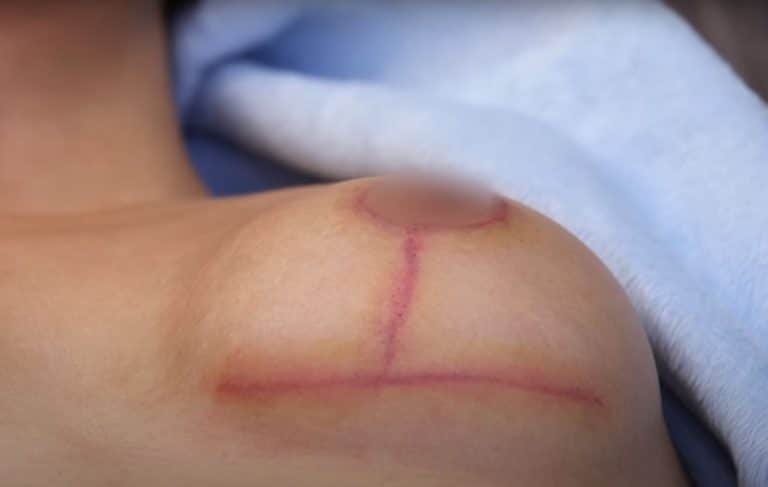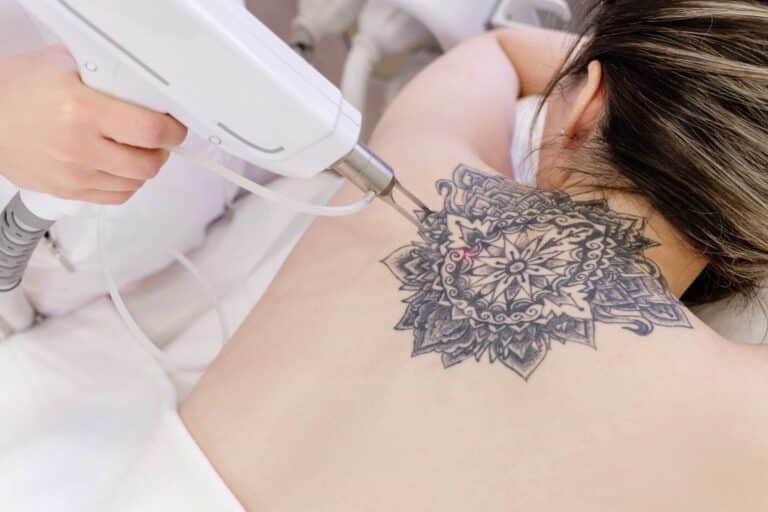Minimise Scars After Breast Reduction Surgery
Breast reduction surgery is a cosmetic procedure that reduces the size and reshapes the breasts. It is most often used to reduce the physical discomfort caused by overly large breasts, such as back pain and neck strain. The procedure involves making an incision around the areola and removing excess breast tissue, fat, and skin. Depending on the amount of tissue being removed, the incision may extend down to the crease beneath the breast. The remaining tissue is then reshaped and tightened, creating a smaller and more proportionate breast size.
The goal of breast reduction surgery is to reduce the size of overly large breasts while maintaining a natural-looking shape and contour. In some cases, repositioning of the nipples may be required in order to achieve this goal. The surgeon will also discuss with you your desired outcome for your new breast size and shape prior to beginning any procedure.
Recovery from breast reduction surgery typically takes several weeks; however, many patients report feeling significant relief from their pre-operative symptoms shortly after surgery. To ensure optimal healing and minimal scarring, it is important to follow all post-operative instructions provided by your surgeon.
Reduce overly large breasts, reshape and tighten remaining tissue, reposition nipples, natural-looking shape and contour, relief from pre-op symptoms, follow post-op instructions.
What do Breast Reduction Scars Look Like?
breast reduction surgery is an effective way to reduce the size of overly large breasts. This can provide relief from physical pain and discomfort, as well as improve self-confidence. However, it’s important to understand that breast reduction surgery will leave scars. The appearance of these scars will vary from person to person, and there are some factors that determine how much scarring you may experience.
Factors that Determine the Appearance of Scarring
The amount of scarring you experience after breast reduction surgery will depend on several factors, including:
- Your skin type – people with darker skin tend to experience more visible scarring than those with lighter skin tones.
- The technique used by your surgeon – the type of incision used during the procedure can affect the visibility of your scars.
- Your age – younger patients tend to heal better and have less noticeable scarring.
- Your lifestyle habits – smoking and drinking can slow down the healing process, resulting in more prominent scarring.
Techniques to Minimise Scarring
Although there is no guarantee that you won’t have any visible scarring after breast reduction surgery, there are a few techniques your surgeon may use to minimise its appearance. These include:
- Using dissolvable sutures rather than staples or stitches which need to be removed.
- Making sure all incisions are closed properly and securely.
Your surgeon may also recommend using silicone gel sheets on the area once it has healed. Silicone gel sheets help reduce redness and flatten raised scars while improving the overall appearance of the area.
Post-Operative Care to Reduce Scarring
Once the breast reduction surgery is complete, there are several post-operative care steps that can be taken to reduce scarring. It is important to follow your surgeon’s instructions for post-operative care and healing in order to minimise scarring and achieve the best possible results.
Swelling
Swelling is a natural part of the recovery process after any surgery. Swelling can cause scars to appear more prominent as they heal. To help reduce swelling, it is important to keep your head elevated above your heart when resting or sleeping, and apply cold compresses or ice packs to the affected area for 10 minutes at a time several times per day. It is also important to wear a supportive compression garment as directed by your surgeon for up to 6 weeks after the procedure in order to provide support while the scars heal.
Skin Tone and Elasticity
The appearance of scars can be improved by maintaining good skin tone and elasticity during healing. This can be achieved by avoiding direct sun exposure on the scar site for at least six months following surgery, moisturising the area twice daily with hypoallergenic lotions, and using sunscreen with SPF 30+ when outdoors. In addition, massaging the area gently but firmly several times a day will help improve skin tone and elasticity by increasing circulation around the scar tissue.
Additional Scar Management Techniques
For further scar management techniques, silicone sheets or gels may be recommended by your doctor or plastic surgeon. These products may help reduce redness, flatten raised scars, soften hard edges of scar tissue, and improve overall texture of the scar over time. Laser treatments may also be used in some cases to fade discolouration caused by hyperpigmentation due to sun exposure or other factors. However, these treatments should only be performed after consulting with a qualified professional such as a dermatologist or plastic surgeon who specialises in treating scars.
In conclusion, it is essential that you take proper post-operative care measures in order to minimise scarring from breast reduction surgery. Following your surgeon’s instructions for post-operative care and taking steps such as keeping your head elevated above your heart when resting or sleeping, applying cold compresses or ice packs regularly, wearing a supportive compression garment for up to 6 weeks after surgery, avoiding direct sun exposure on the scar site for at least six months following surgery, moisturising the area twice daily with hypoallergenic lotions, using sunscreen with SPF 30+, massaging the area gently but firmly several times a day ,and using silicone sheets or gels may all help reduce scarring from breast reduction surgery and achieve optimal results.
Book a Breast Reduction Consultation
breast reduction surgery can be a life-changing experience for many women, and it is important to have all the information you need before making a decision. If you are considering breast reduction surgery, the best way to get started is to book an appointment with a qualified plastic surgeon. During your consultation, the surgeon will examine your breasts and discuss your goals for the procedure.
Your consultation should include a discussion of your medical history and any medications you may be taking. The surgeon will also assess your skin tone and elasticity, as well as the size and shape of your breasts. This information will help them determine if you are a suitable candidate for breast reduction surgery and what type of procedure would be best for you.
During the consultation, you should also ask questions about potential risks and complications associated with the procedure. Your surgeon will be able to explain in detail how the surgery is performed and what kind of results you can expect from it. They will also provide information on post-operative care instructions that can help reduce scarring after the surgery.
Finally, it is important to find out about financing options available for breast reduction surgery. Most surgeons offer financing plans or payment plans that can help make this procedure more affordable. Ask questions about these options during your consultation so you can determine which one would work best for you.
Once you have completed your consultation, it is time to decide if breast reduction surgery is right for you. Be sure to take some time to think over all the information and consider any concerns or worries that may arise before making a final decision.






